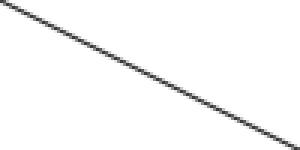Page 7 - AA and AF explained
Anisotropic filteringTexture mapping is a rather easy graphical modeling technique that makes complex and impressive looking 3D objects. The technique of Anisotropic filtering tries to achieve the best possible texture mapping in situations where the models geometry places stringent requirements on the texturing process. Anisotropy is the effect (distortion) that you notice in Texels (Texture per Pixel) of a 3D object who's surface is oriented at an angle with respect to a viewpoint of the screen. If a pixel from such a surface is mapped to texels, its shape becomes distorted. Currently the most advanced filtering technique available that compensates for anisotropic pixel distortion is...Anisotropic filtering. Okay, now for non Guru's .. Anisotropic filtering is a way to create better and sharper image quality for perspective in depth scenes. When you make use of this function then remember this, the greater the degree of Anisotropic filtering the lower the performance of the videocard. GeForce Series 6 now can handle 16 levels of AF; w00t!
AntiAliasing
There's a phrase you heard once or twice before. First off, if you are a beginner with this topic, Antialiasing -> Simple explanation. This is to get rid of the "jaggies" on diagonal lines. Look at the picture below.
It boils down to this. To recover a signal, or image, you need a minimum of samples to be able to give a realistic representation of the image. The problems start with texture maps being either too close or too far away from the viewpoint. If the polygon is far away then you only have a limited number of points to show the texture map, so logically you have to drop a lot of the real pixels of your texture map.
 |
Antialiased line - If you draw a straight line (under an angle) using a paint program and you zoom in, you will discover that the line looks like a stairway. To remove this and make the line look like a line points in different colors are added to the side of the line to make it look more like a real line. |
This creates some sort of interlace effect : one line is shown and one is not. This can result in weird patterns appearing, and makes the texture map look completely different from the real one. A similar problem is if the polygon is close to you. You need more info than there is available, resulting in the generation of random noise (meaningless values).
Most of the time the last problem is solved by MIP-Mapping while the other is solved by the Antialiasing. Another point where Antialiasing is used is with straight lines. If you draw a straight line (under an angle) using a paint program and you zoom in, you will discover that the line looks like a stairway. To remove this and make the line look like a line, points in different colors are added to the side of the line to make it look more like a real line.
Some explanation
To understand what new Antialiasing method NVIDIA is introducing you need to understand the old ones. I'll give it a try in the easiest way I can describe it. This will still be tough to comprehend though; so don't shoot me when you are near the end of this page!
Now basically there are two methods that have been used for a long time and still are being used. They are called Ordered Grid Supersampling (OGSS) and Rotated Grid Supersampling (RGSS). 3dfx already used rotated grid super sampling and yes it was yummie despite the fact the card did not have the power to handle it. There are different roads to achieve anti-aliasing as there are multiple techniques available. One of the more interesting yet not new variations is placing subpixels on a rotated, not ordered grid. ATI has used it for a while already, in fact ever since the Radeon 9700, I think.
OGSS - Takes the 3D Scene, up-samples it to a higher resolution, takes a number of nearby pixels (subsamples) (thus takes a neighboring pixel (sample)) averages it with the original sample and then averages the pixel colors of that new sub-sample.
If you have a 800x600 screen resolution this is what happens with AA settings at:
-
2x - 3D scene is up-sampled (higher resolution) 2X only on one axis (the axis is X or Y thus width versus height), to 800x1200, only two sub-samples are used to calculate the final pixel color.
-
4X - 3D scene would be up-sampled 2X on both axes, thus 1600x1200, and four sub-samples are used to calculate the final pixel color.
- 16X - 3D scene is up-sampled 4X on both axes for example towards 3200x2400, and then sixteen sub-samples are used to calculate the final pixel color.
You can imagine the sheer amount of GPU power and memory is needed to handle AA.
